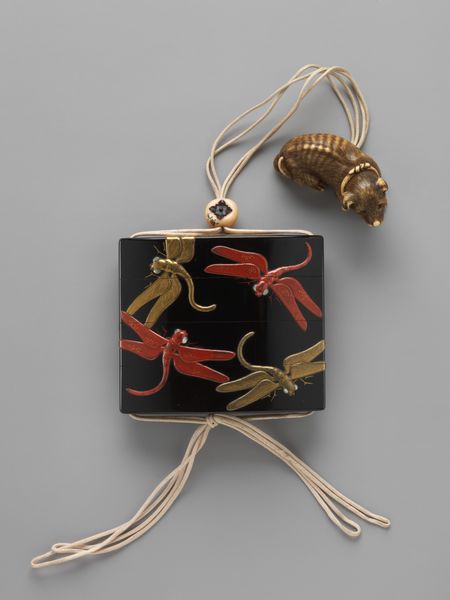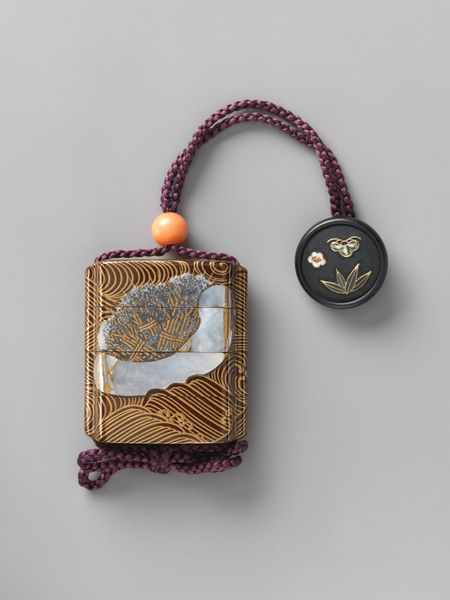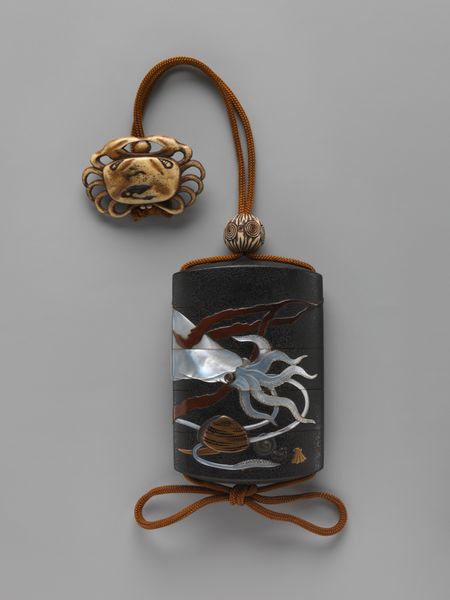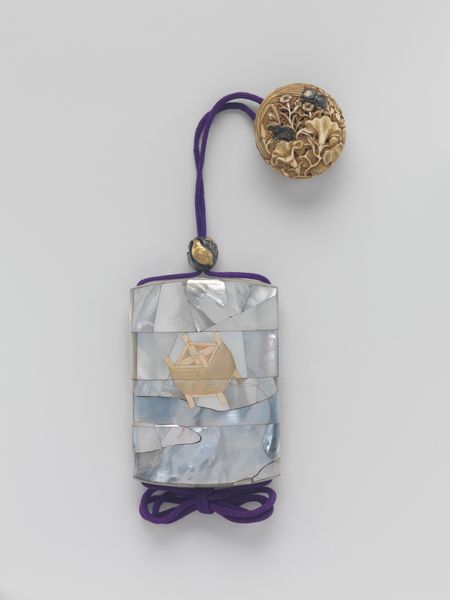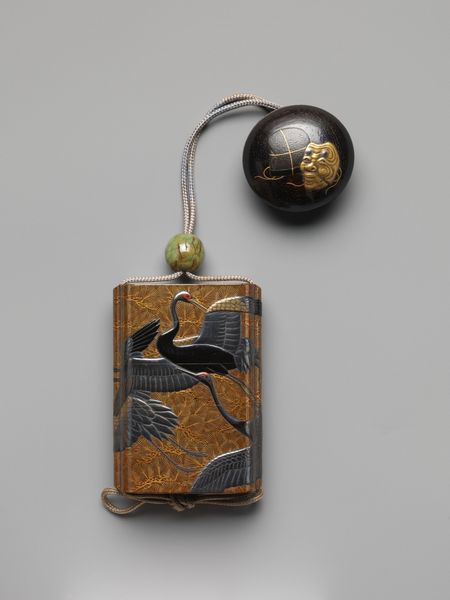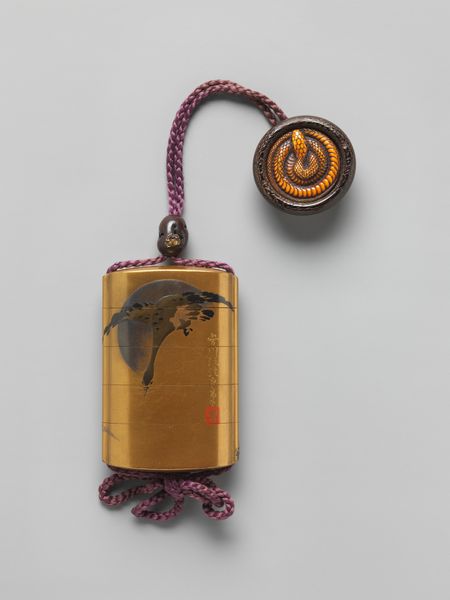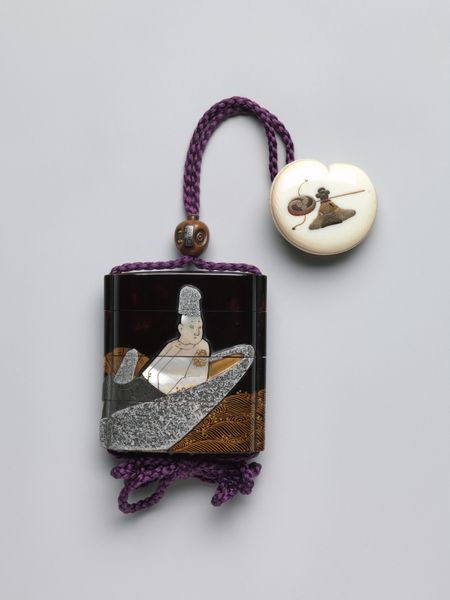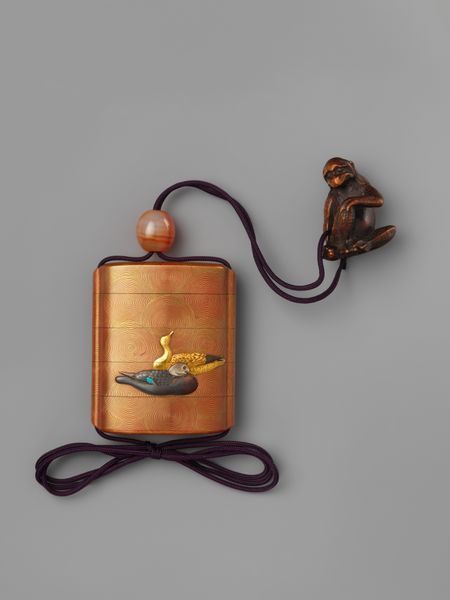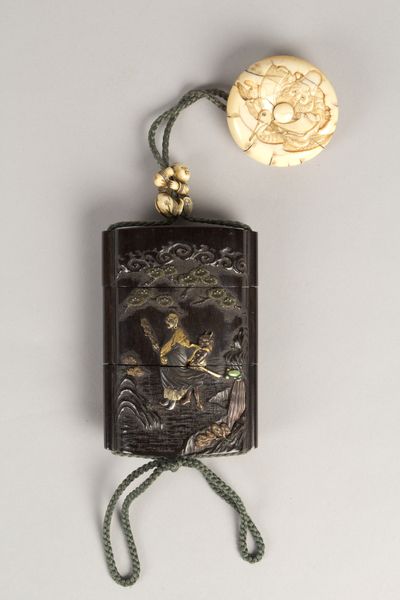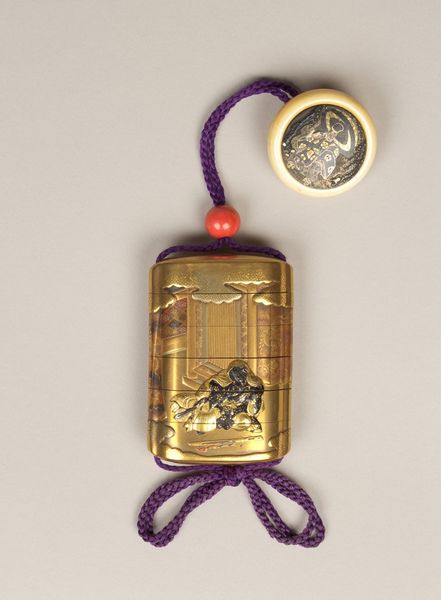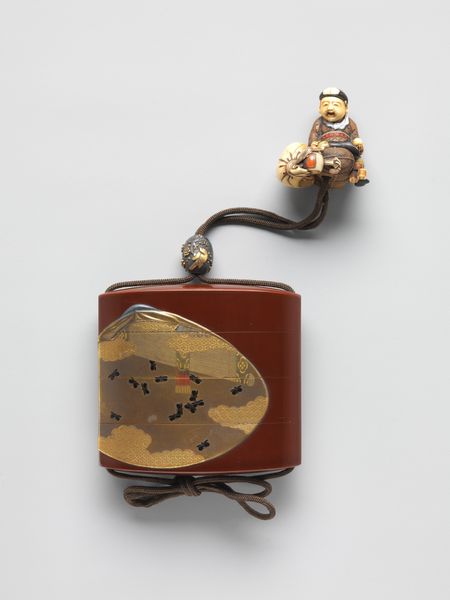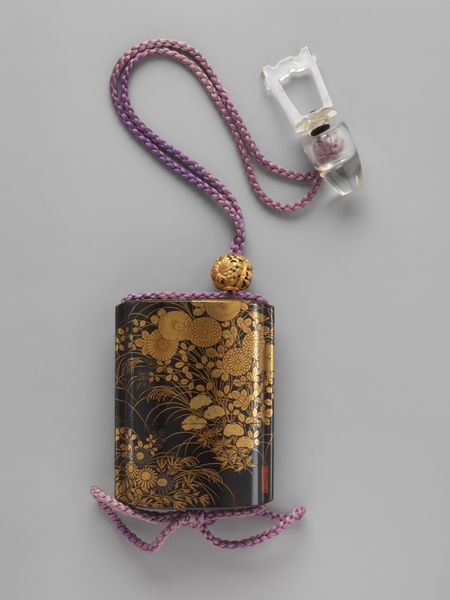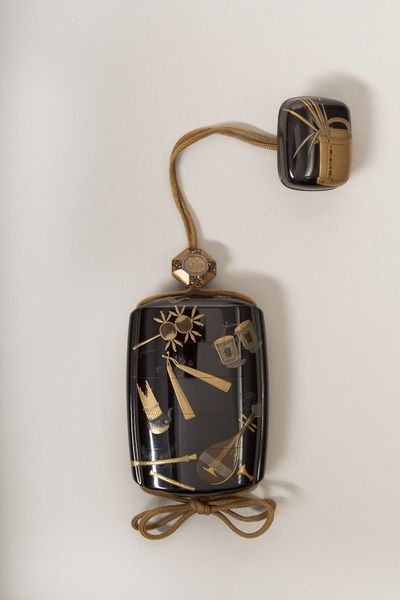
Case (Inrō) with Design of Bean Vine and Moon 1700 - 1733
0:00
0:00
wood
#
asian-art
#
japan
#
wood
#
decorative-art
#
miniature
Dimensions: H. 2 13/16 in. (7.2 cm); W. 2 3/8 in. (6 cm); D. 7/8 in. (2.2 cm)
Copyright: Public Domain
Curator: This beautiful piece is an inrō, titled “Case (Inrō) with Design of Bean Vine and Moon,” created by Shiomi Masanari between 1700 and 1733. The object itself, now residing at the Metropolitan Museum of Art, is made of wood. Editor: It's captivating! So small and yet the polished black of the lacquer and that shimmering inlay. I’m drawn to how the craftsman transformed natural elements into something so elegant and functional. Curator: Precisely. Inrō like this were originally created as containers for seals or medicines, often worn suspended from the obi, or sash, of a kimono. It reflects a broader trend during the Edo period of decorative objects finding greater integration in day-to-day life. Editor: Thinking about how this was actually worn brings a different perspective, not just ornamentation, but part of somebody’s outfit. I’m curious about the selection of materials and the labor involved. What would it have meant to someone to own an inrō of this quality? Curator: Well, objects like these also functioned as signifiers of status and wealth, reflecting not only taste but also social position within Edo society. The quality of materials and level of craftsmanship were clear indicators of the owner's place. Editor: Look at the mother-of-pearl used for the moon and bean pods, each piece carefully inlaid to reflect the light, making a subtle sheen. This object clearly goes beyond pure practicality and highlights labor as much as the overall aesthetic. The detail work is impressive, given the size. Curator: That detail is significant. These pieces would often become treasured family heirlooms, passed down through generations as symbols of legacy and continuity. Furthermore, we have to also see it within a rapidly changing urban culture. Editor: True, urban centers always become vibrant contexts. So, beyond family legacies, the inrō acts like a small material record, too, preserving design motifs, use of specialized craft knowledge, and shifting cultural values from this period. Curator: Indeed. Examining such artifacts helps us appreciate the blend of artistry, societal rank, and aesthetic tastes characteristic of Japan during the Edo period. Editor: Right, thinking about both the exquisite polish and what went into crafting this inrō broadens my understanding about it as both material object and reflection of its moment.
Comments
No comments
Be the first to comment and join the conversation on the ultimate creative platform.
